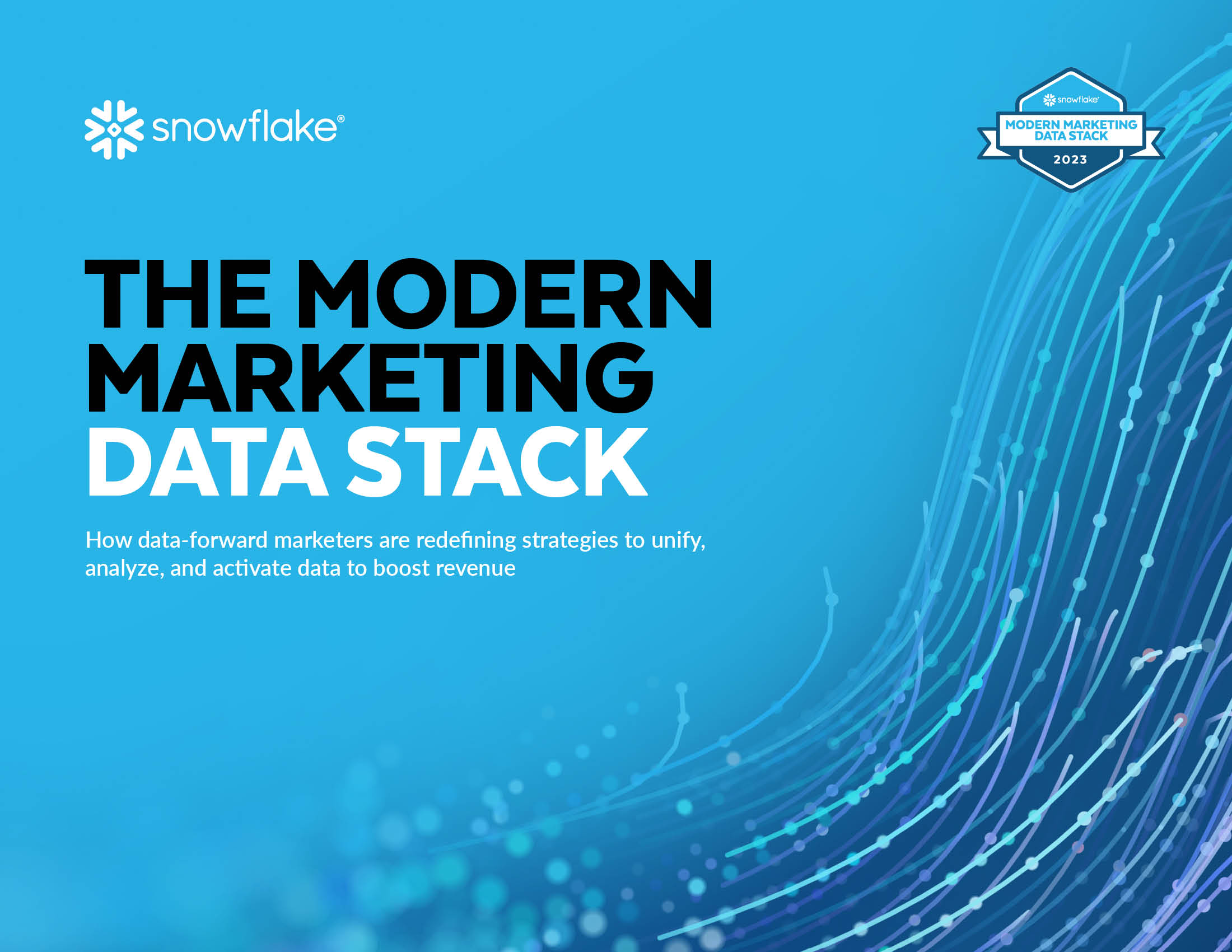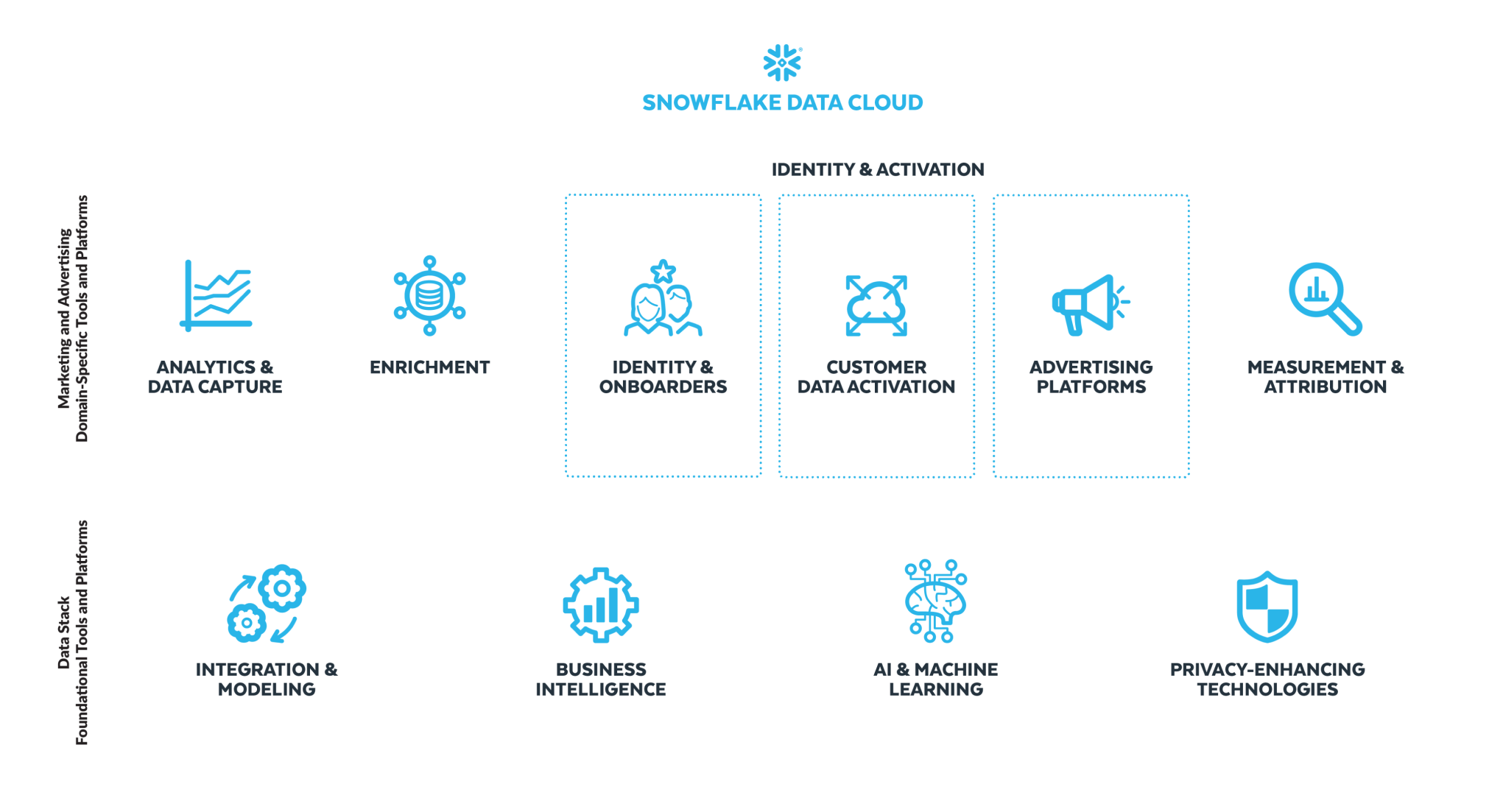The goal of this research was to identify the technologies that have developed a significant, active customer base within Snowflake. The analysis was conducted over a 12-month period, from April 4, 2022, to April 3, 2023, looking at more than 8,100 Snowflake customers. The process was as follows:
Identify the full list of technologies for marketing data stack:
- We looked at Snowflake’s active customers’ use of marketing technologies during the analysis period. Active customers are defined as:
- A customer with either a capacity or an on-demand/self-service contract, with a contract end date that has not passed.
- A customer that has generated revenue for Snowflake in the last year.
- The technologies considered as part of the four categories of Data Stack Foundational Tools must be active members of the Snowflake Partner Network (SPN), or have a comparable agreement in place with Snowflake. The technologies for the 10 categories of the Marketing and Advertising Domain Specific Tools and Platforms must either be active members of SPN, or be Snowflake Marketplace Partners that have agreed to the Marketplace Terms and Conditions.
- Growth figures included all active Capacity and Self Service customers as of April 4, 2022, with positive Snowflake revenue during the year ending April 3, 2023. Percentages reflect increased customer consumption of the respective tools within each category in April 2023, as compared to the consumption of those same tools in April 2022.
Split the technologies based on their type of Snowflake usage: The multiple workloads that exist in Snowflake, combined with the optionality of different application deployment models available in Snowflake, means that vendors integrate with the Data Cloud in different ways and for different purposes. To accurately evaluate market leadership and adoption levels, particular metrics were applied to providers based on the type of Snowflake consumption. Specifically, the analysis consisted of splitting the technology providers into two separate categories: Technologies that use Snowflake’s workloads for data integration, transformation, and analysis; and technologies using Snowflake’s collaboration workload. The overlap for tools operating on both sides was less than 0.5%.
Identify key metrics needed to measure success of different marketing tools for each category.
- The metrics for technologies using Snowflake’s core workloads for data integration, analysis, and transformation were:
- Total number of active customers using the technology on Snowflake
- Total credit consumption the technology uses on Snowflake
- For technologies using Snowflake’s collaboration capabilities:
- Total number of stable edges that include the technology. Stable edges are the ongoing relationships between providers and consumers of data. A stable edge is defined as a data share that has produced at least 20 transactions in which compute resources are consumed and such consumption results in recognized product revenue over two successive, three-week periods (with at least 20 transactions in each period).
- Total credit consumption driven by data shares that the technology is using on Snowflake.
- Total spend on Snowflake, as consumption dollars, as a way to credit managed applications and tools that are delivering to customers, albeit without data sharing.
Generate a ranking based on the type of Snowflake usage that illustrates the level of market penetration achieved by the technology, and complement it with how deep that usage is. The calculation is based on the following weighted criteria:
- Technologies using Snowflake’s core workloads for data integration, analysis, transformation:
- Breadth (50%): number of active customers
- Depth (50%): total credit consumption
- Technologies using Snowflake’s collaboration capabilities:
- Breadth (40%): number of stable edges
- Depth (40%): total credit consumption from shares
- Spend (20%): consumption dollars, as a pointer for breadth of adoption of managed applications besides the data sharing usage
- Data enrichment category:
- Breadth (100%): Number of stable edges, to prioritize measuring collaboration for enrichment purposes rather than size of different organizations’ data sets.
Rank/select the marketing technologies from 1 to N, where the lower number (ranking) is more favorable. Combine the full list of technologies across both groups and normalize this ranking between 0-100. (A score of 100 would be the technology ranked first across every metric.)
- Leaders represent the top technologies with the highest index in each category.
- Ones to Watch did not necessarily follow the leaders in their standing, but were selected based on multiple factors such as strong recent momentum in the market, innovative technology or approach with Snowflake, or have recently demonstrated strong customer capabilities.





